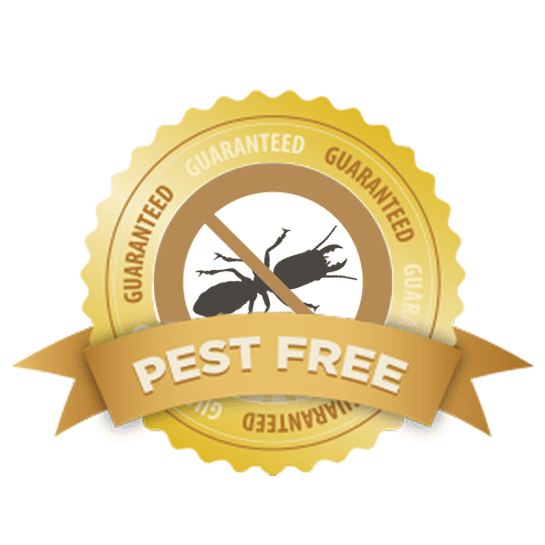Trusted A1 Exterminator Charlotte NC - Comprehensive Pest Solutions
Wiki Article
Bed Pest Treatment Malfunction: Contrasting Chemical Vs. Non-Chemical Solutions
In the world of parasite control, particularly when dealing with the persistent issue of bed insects, the option between chemical and non-chemical treatment remedies can be a crucial one. Both strategies use unique benefits and downsides, affecting variables such as performance, safety considerations, and total price. By analyzing the nuanced details of each technique, a more clear understanding of which path to seek in resolving a bed pest problem can be achieved.Efficiency of Chemical Treatments
Chemical treatments for bed bug infestations have been extensively recognized for their fast and powerful effectiveness in removing these pests. When thinking about the efficiency of chemical treatments, it is critical to recognize that they can give a fast and detailed service to a bed bug trouble.Furthermore, chemical therapies have the advantage of providing residual results, meaning that they can remain to get rid of bed bugs even after the preliminary application. This residual activity is particularly valuable in combating any type of possible re-infestations. In addition, the quick activity of chemical therapies can bring relief to people dealing with severe bed insect infestations, permitting them to gain back control of their home promptly.
Safety Worry About Chemical Solutions
One critical facet that requires mindful consideration when using chemical services for bed insect treatment is making certain the security of occupants and the atmosphere. Exposure to particular chemicals utilized in bed insect therapies can lead to breathing issues, skin irritability, or other damaging responses, specifically in individuals with pre-existing problems or sensitivities.Furthermore, the ecological influence of chemical services is an additional substantial consideration. Some chemicals used in bed insect treatments may be damaging to advantageous insects, wild animals, and environments if they seep into the soil or water systems. It is important to utilize chemical therapies carefully, complying with safety and security standards, and considering less hazardous choices to mitigate these risks and make certain the risk-free and efficient administration of bed pest invasions.
Benefits of Non-Chemical Methods
Considering the possible security worries and environmental impact connected with chemical options for bed pest treatment, discovering non-chemical techniques offers an appealing option with several distinctive benefits. Non-chemical techniques provide a more secure choice for families, specifically those with family pets, people, or children sensitive to extreme chemicals. These techniques eliminate the risks of exposure to harmful materials, lowering the capacity for unfavorable health effects. In addition, non-chemical therapies are ecologically friendly, as they do not contribute to air or water air pollution, making them a lasting selection for parasite control.Furthermore, non-chemical options can be reliable in targeting bed insects, consisting of hard-to-reach locations where chemical treatments may not pass through. Methods such as warm treatment, vacuuming, heavy steam cleaning, and mattress encasements provide complete removal without making use of unsafe chemicals. Moreover, non-chemical approaches can be less disruptive, needing marginal preparation and allowing for quicker reentry right into treated locations. Generally, going with non-chemical bed insect therapy techniques not just focuses on safety and environmental management but additionally ensures detailed and reliable parasite control.
Limitations of Non-Chemical Treatments

Additionally, non-chemical therapies commonly call for numerous applications my site to achieve effective removal. This can be lengthy and might not constantly ensure complete removal of all bed bugs and their eggs, particularly in covert or hard-to-reach areas.
In addition, the success of non-chemical treatments heavily counts on appropriate execution and thoroughness, which can be challenging for people without expert competence. Insufficient application of non-chemical techniques might cause incomplete obliteration, resulting in relentless problems and the demand for additional treatments.
As a result, while non-chemical therapies have their advantages, it is necessary to recognize these restrictions and consider them when determining the most effective strategy for taking care of bed pest problems.
Cost Comparison: Chemical Vs. Non-Chemical Options
Given the restrictions linked with non-chemical therapies, an important element to examine in the context of bed insect management is the price comparison between chemical and non-chemical alternatives. In comparison, non-chemical therapies like heat therapy or vapor can be much more pricey, with expenses varying from $1,000 to $6,000 for a whole home. While the preliminary expense of chemical therapies might seem reduced, multiple treatments may be called for to completely eliminate the invasion, potentially raising the general price.Verdict

Considering the potential safety and security issues and ecological influence linked with chemical services for bed pest treatment, discovering non-chemical approaches presents a promising choice with several unique benefits.Provided the constraints linked with non-chemical treatments, an essential element to assess in the context of bed pest monitoring is the cost comparison between chemical and non-chemical alternatives. In contrast, non-chemical treatments like warm therapy or vapor can be more expensive, with expenses varying from $1,000 to $6,000 for a whole home. While the initial from this source cost of chemical treatments might seem lower, multiple treatments may be needed to completely eliminate the problem, potentially boosting the total cost.In verdict, when contrasting chemical and non-chemical bed pest therapy choices, it is important to take into consideration effectiveness, safety, benefits, constraints, and price.
Report this wiki page